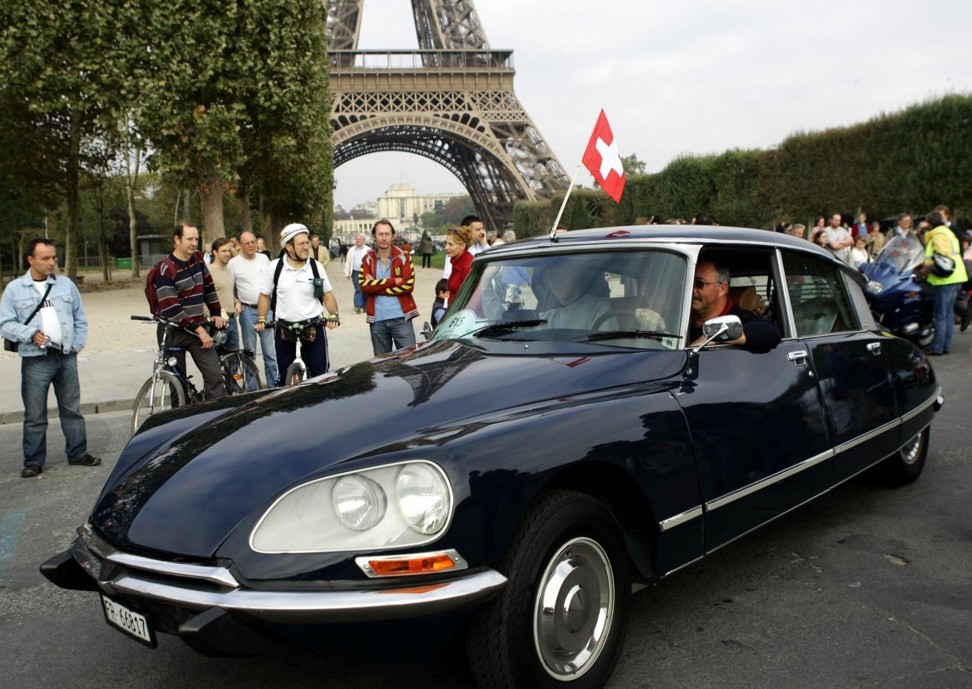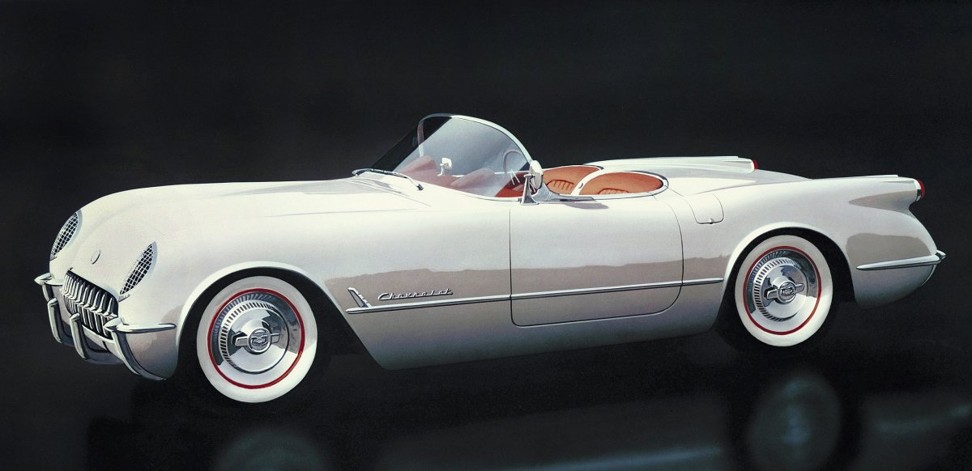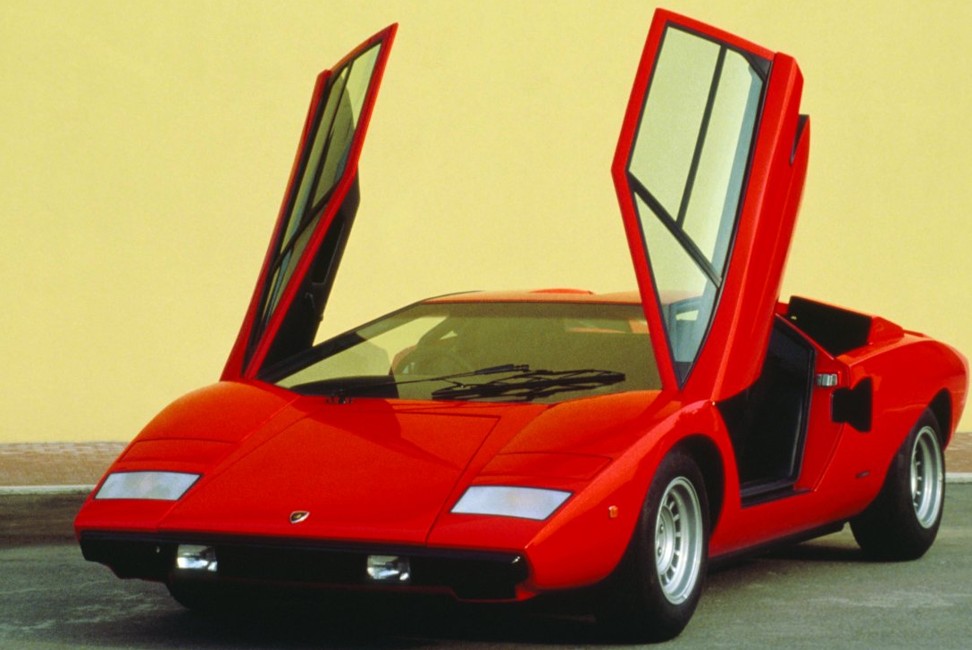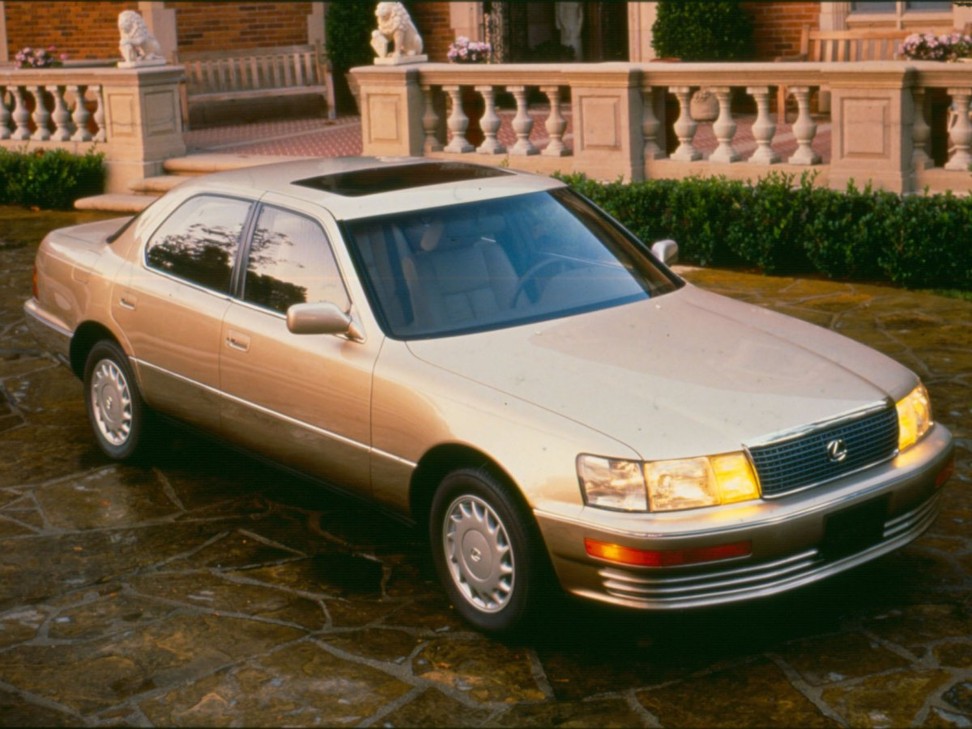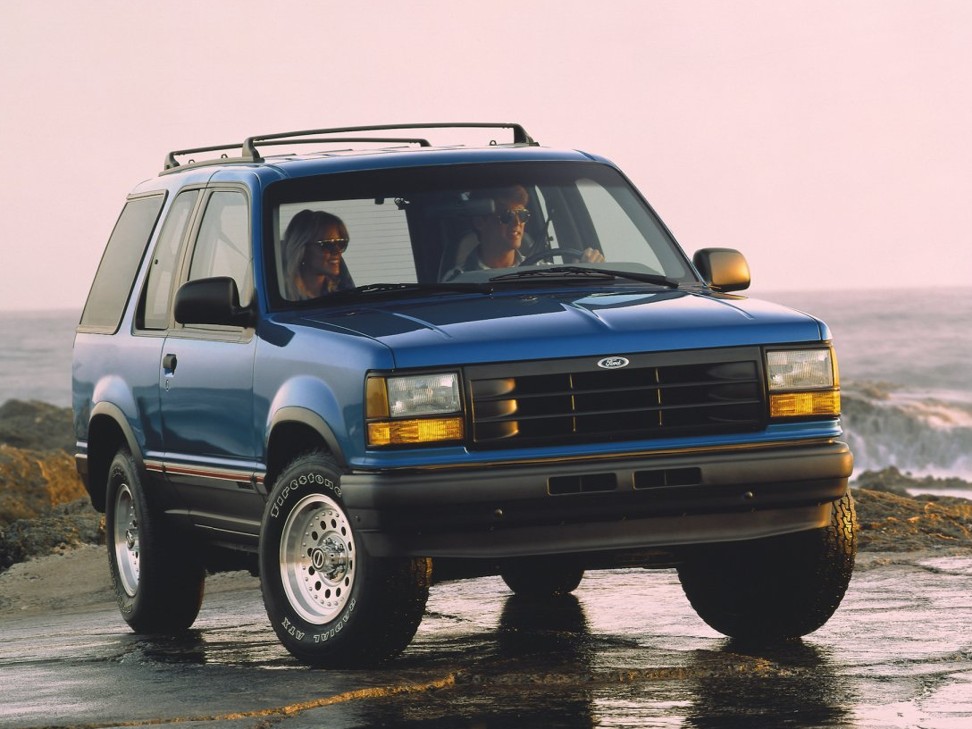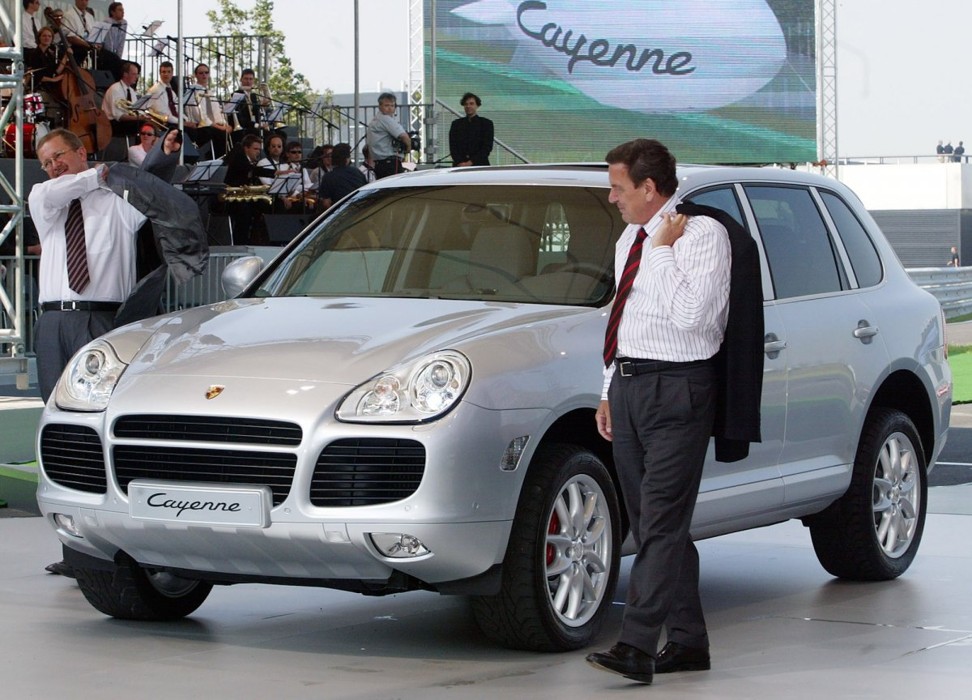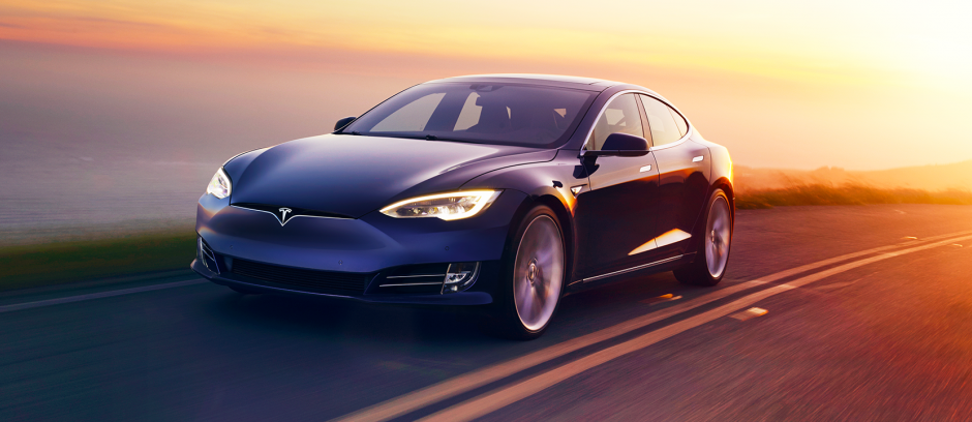World’s most iconic cars and trucks over 80 years

We’re always trying to figure out what the “golden age” of motor vehicles was ... but the truth is that ever since the second world war, we’ve lived in something of an endless golden age.
For the past eight decades, cars and trucks have been incredible: gorgeous, innovative, powerful – and even reliable and affordable.
Today, as we spend more time talking about not owning cars and enjoying them drive themselves, we thought it would be appropriate to look back on past motoring glories and pick a few big “winners” among the vehicles on offer.
Our criteria was simple: was the vehicle a smash hit at the time, historically important – and did it change the game or exert a huge influence on the motoring industry?
Bonus points were gained if a model is still in production in 2017.
Here’s what we came up with – the two best vehicles from each decade, from the 1940s to the present day.
The 1940s:
Original Jeep
Why it’s here:
The Willys-Overland Jeep was the vehicle than helped the Allies to win the second world war.
The original rugged, throw-anything-at-it set of wheels, its legacy remains strong in vehicles such as the Jeep Wrangler.
Military vehicles have sometimes made the transition to civilian life. Think of the Hummer, for example. But the Willys Jeep is one of the vehicles that said it all in victorious fashion.
Simple, easy to maintain, tough and ready for action. It was used by the US military and its Allies as a scout car, so it saw front-line duty.
Study it today and you can’t help but be impressed by its perfect combination of form and function.
Ford F-Series pick-up truck
Why it’s here:
Ford’s F-Series pick-ups were originally introduced as work trucks and delivery vehicles for businesses, farms and grazing and hunting land.
Fast forward almost eight decades and the F-Series has become America’s bestselling vehicle, reigning at the top since the 1980s.
Ford is expected to sell nearly one million of the vehicles in 2017. That astounding run had to start somewhere.
The 1950s:
Citroën DS
Why it’s here:
Its iconic styling, advanced hydropneumatic suspension, and numerous Citroën design quirks made the DS truly unique.
The beautiful machine went into production in 1955 and stayed there until 1975. America had tail fins, Mustangs, and high-performance sports cars during that period. France had the beautiful DS.
Chevrolet Corvette
Why it’s here:
The dashing, roadster incarnation of the Corvette became street legal in 1953 and while it evoked, on a smaller scale, some of the moods and trends of the 1950s, it also looked ahead to smaller, snazzier 1960s rides, such as the Ford Mustang.
A lot of Corvette fans favour the curvy fibreglass machines of the 1970s, or consider the latest Chevrolet products – the Stingray, Z06, Grand Sport, and epic new ZR1 – to be the carmaker’s finest.
However, the first-generation Corvette is still the true head-turner.
It proved that America, land of huge saloon car, could do a sports car as well as the Europeans.
The 1960s:
Volkswagen Beetle
Why it’s here:
The “people’s car”, or “Volks-Wagen” as it was originally named, was created by Ferdinand Porsche at the behest of Nazi Germany as a cheap vehicle for everyone.
Affordable, basic transportation was what a lot of people wanted as the huge American saloon cars of the 1950s lost their lustre.
Eventually, the VW Beetle would go out of production – 2003 was the final year – but not before 21 million had been sold.
Ford Mustang

Why it’s here:
The iconic “pony car” was Ford’s attempt at giving youthful Americans the cars they sought in the mid-1960s.
The car was an immediate success and today is widely remembered as the vehicle driven by actor Steve McQueen in a celebrated car chase featured in hit 1968 film, Bullitt.
McQueen did his own stunt driving in a highland green Ford Mustang 390 GT in the chase scenes and became a big fan of the car.

But the Mustang also had its ups – and downs: the second-generation Mustang of the 1970s is now widely considered an embarrassment and unworthy of the name.
However, a new two-seater for the third-generation became a legend: these are the famous “Fox body” Mustangs, and after more than 50 years, the Mustang is now better than ever.
The 1970s:
Honda Civic
Why it’s here:
Detroit carmakers ridiculed the teeny, fuel-sipping Japanese cars when they first started to arrive in force in the US. But by the time the first Honda Civic landed in 1973, Americans had experienced something shocking and new: a petrol crisis.
Suddenly precious and, for the time, pricey, petrol made Americans look twice at their big “gas-guzzling” vehicles, stylish and roomy though they may have been.
The groundwork for smaller cars had already been laid by the VW Beetle and Ford Falcon, but the Civic offered something else: impressive reliability.
It was the opposite of planned obsolescence, the notorious game of making sure customers craved a new car every few years.
The Civic promised high fuel economy and would run until the wheels fell off. No wonder it’s been in continuous production ever since and has been one of the most popular vehicles of all time.
Lamborghini Countach
Why it’s here:
Holy Cow! That is what Countach means in Italian slang. It’s also the expression people made the first time they gazed upon this glorious machine at the 1971 Geneva Motor show.
While the stunningly beautiful Lamborghini Miura may have been the original supercar, it is the Countach that put the supercar on the map. No car in the past 40 years can match the Countach for sheer star power.
Armed with Lamborghini’s legendary Bizzarrini V12 engine, a sleek wedge-shaped body by Marcello Gandini, and its iconic up-swinging doors, the Countach was a cultural phenomenon.
Not even the 1973 Arab oil crisis could stop this raging bull.
The 1980s:
Dodge Caravan
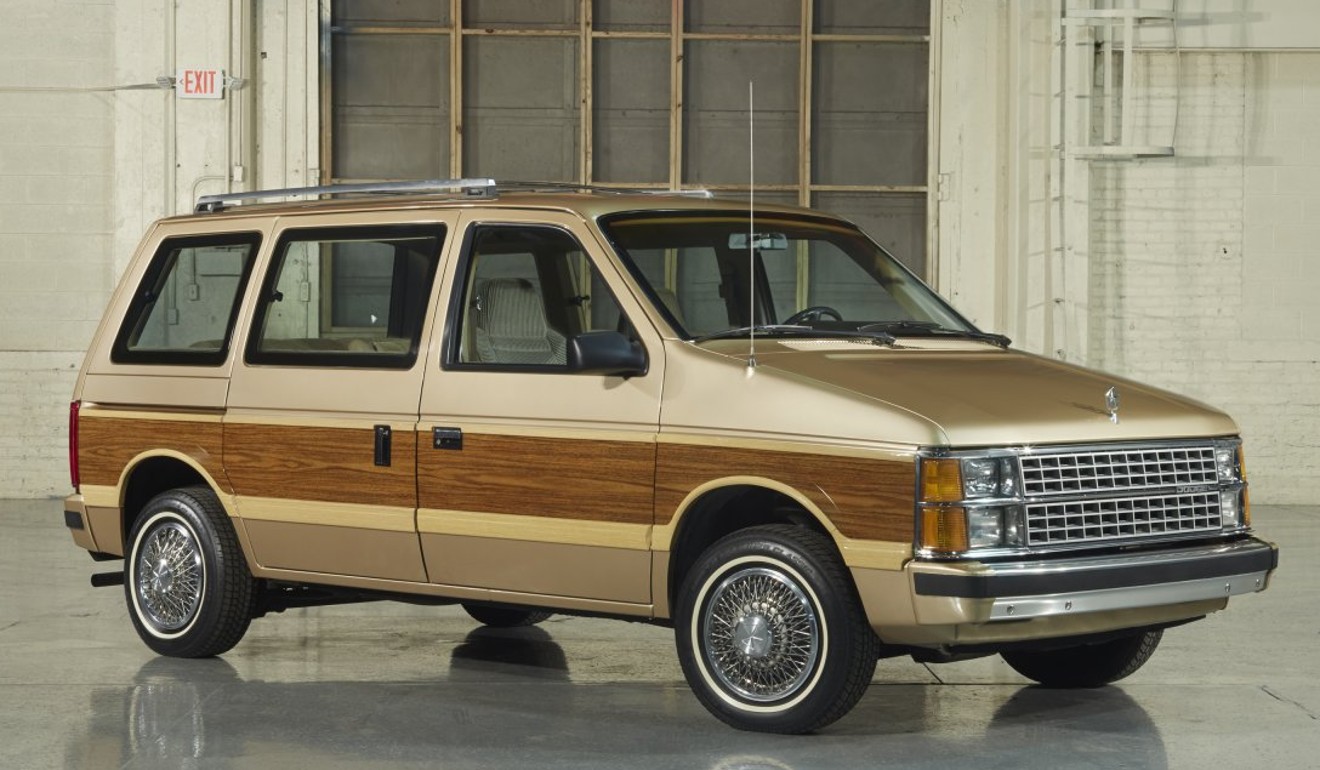
Why it’s here:
Before Chrysler created the mini van, there were certainly vans, but they weren’t aimed at carrying around families. They were for deliveries and for people who wanted to modify the panel vans of the 1970s to be small campers, complete with exotic murals painted on the exterior.
We also had some precedence in the VW bus, that transporter of the counterculture.
Chrysler rolled out the first proper, family-oriented mini vans, the Dodge Caravan and Plymouth Voyager, in 1983.
The vehicles were big hits and spawned imitators. And although much of the mini van’s thunder has lately been stolen by SUVs, there continue to be parents who swear by them.
Fiat Chrysler’s Pacifica, a caravan descendant, has been quite popular, and Honda and Toyota have sent the Odyssey and the Sienna into the battle to win over residents in the suburbs.
Lexus LS400
Why it’s here:
Toyota already had a stupendous reputation in the US for building cars that always started, lasted forever, and were easy on the wallet at the fuel pump.
The company could have stuck with that forever, but it thought: what if we bring the “Toyota Way” to the luxury market?
The luxury market itself was largely an invention of the Reagan years; before, Americans simply traded their way up to the finer automobiles made by Lincoln and Cadillac.
Yet the Germans – BMW and Mercedes – transformed from being all about quality and performance to being about social status.
Enter Lexus, Toyota’s effort at using its vaunted manufacturing prowess to compete with Mercedes.
It was a huge risk. But it paid off.
The Lexus LS400 was so good that it almost immediately created a top-tier of US luxury brands that consisted of Mercedes, BMW, and Toyota’s new prestige marque.
Honda’s Acura was actually the first Japanese carmaker to take the plunge in 1986, and Infiniti followed with Acura. But Lexus achieved the gold standard in 1989 – and in the process saw Toyota hit its US peak.
The 1990s:
Ford Explorer
Why it’s here:
We have the Ford Explorer to thank for the dominance of SUVs in the US car market. Introduced in the early 1990s, the vehicle transformed the rugged utility truck, intended to be an expedition vehicle, into the preferred set of wheels for suburbanites with families.
In the process, the Explorer effectively ended the long reign of the large hatchback – or station wagon as it is known in the US – as the practical family car.
Hit by a steep rise in petrol prices after the financial crisis, the Explorer mounted a comeback, and by 2013 it was once again a vital Ford vehicle as Americans turned away, not just from hatchbacks but also family saloon cars.
As SUVs go, none has been as influential as the Explorer. The name remains in Ford’s line-up – and it is still an excellent choice.
McLaren F1
Why it’s here:
The McLaren F1 represents the pinnacle of 1990s motor technology. The British supercar helped pioneer advanced carbon-fibre construction and delivered performance no other production car could approach for more than a decade.
In the 1990s, the F1 stood alone atop the car universe. It’s US$810,000 price tag made it the most expensive car in the world.
Its BMW V12 effortlessly produced 627 horsepower at a time when 500 was tough to come by. And it’s 240 mph (386 km/h) top speed would remain unchallenged for nearly a decade.
The McLaren F1 was so good that a lightly modified version of the road car went racing at the Le Mans 24 Hours race in France in 1995. The F1 not only won, but it dominated the most gruelling sports car race in the world by finishing first, third, fourth, and fifth.
The 2000s:
Toyota Prius

Why it’s here:
It’s ironic that the first Priuses hit the US market during a period of peak SUV. Toyota spent years and billions developing an anti-SUV: a relatively modest, homely four-door with a secret weapon under the bonnet.
That was the Hybrid Synergy Drive, the first commercially viable petrol-electric hybrid. Almost overnight, consumers had a vehicle – and a Toyota, no less – that could deliver elevated fuel economy and cut down drastically on emissions.
The first-generation to hit US shores around 2000 was based on the dowdy Echo economy saloon car, but the next generation offered that now-infamous Prius profile, thought by many to be the ugliest car in the road, but for Prius owners, a thing of beauty.
Toyota has sold more than six million Priuses (or Prii, if you favour the camaker’s own preferred plural form).
Today the impact of the Prius can’t be overstated. Like the Ford Model T almost 100 years earlier, it changed everything.
Porsche Cayenne
Why it’s here:
Just what the world needs: a slow Porsche! That’s the kind of thing Porsche’s sport-car loving loyalists said when the company announced its SUV plans. The widespread assumption was the Porsche would make a fool of itself. But it didn’t.
The Cayenne swiftly garnered both the respect of Porsche-philes and the admiration of owners. Porsche set out to build the greatest SUV on Earth — and succeeded.
Sure, the Cayenne wasn’t a 911. But with its brilliant new SUV, Porsche created a new market for high-performance luxury utility vehicles and raked in the spoils.
Fast forward to 2017 and every other major luxury brand, save Ferrari, has an SUV in its line-up. And Ferrari is preparing to take the plunge. Porsche is to be thanks for taking the risk with its Cayenne and leading the way.
The 2010s:
Tesla Model S
Why it’s here:
If there’s a car that could plausibly be argued as being more important that the Model T, it’s the similarly named Model S.
Tesla and chief executive Elon Musk had, with the company’s original Roadster, proved that electric vehicles didn’t have to be glorified golf carts; they could be fast and sexy.
The Model S was Tesla first all-Tesla design (the Roadster had been based on a Lotus). It was fast, comfortable, stylish, and luxurious.
Motor Trend, the US motoring magazine, named it “Car of the Year” for 2013. Tesla, desperate for cash, could sell it for US$100,000.
Over the following years, Tesla would upgrade the range and performance of the Model S, culminating in the P100D, which can outrun supercars from 0-60 mph.
The Model T was monumentally important. But the Model S was monumentally dazzling.
Uber
Why it’s here:
For all its faults, Uber joined on-demand ride-hailing with the app economy and made it possible to eliminate much of the friction of getting around.
In short order, users realised that using Uber could be cheaper than owning a car.
The company remade the urban landscape and in the process shook up the taxi business.
Before chief executive Travis Kalanick’s departure in 2017, Uber was reckless and defiant in its relentless efforts to dominate the new market it had created.
The company has faced a series of lawsuits, scandals and battles with governments in Europe.
However, there’s no debating that for the first time since the invention of the motor car, Uber got a massive number of people thinking about why they might not ever need one.
Read the original story at Business Insider

Actor Steve McQueen loved the 1960s Ford Mustang 390 GT he drove in the film ‘Bullitt’, but what are the other classic motor vehicles since the 1940s?



